Want to lure lots of pollinators to your sunny summer flower garden? Try planting a perennial border specially designed to lure butterflies, bees, and hummingbirds. Follow these tips and the pollinators won’t be able to resist your garden!
Tag: Pollinator Gardening
DIY Garden Project: Hummingbird Gardening
Want to bring lots of hummingbirds to your garden this year? Here are seven of the top garden flowers for hummers. Try planting these top hummingbird flowers and watch the show!
Download the Step-By-Step PDF
Tough Garden Yuccas
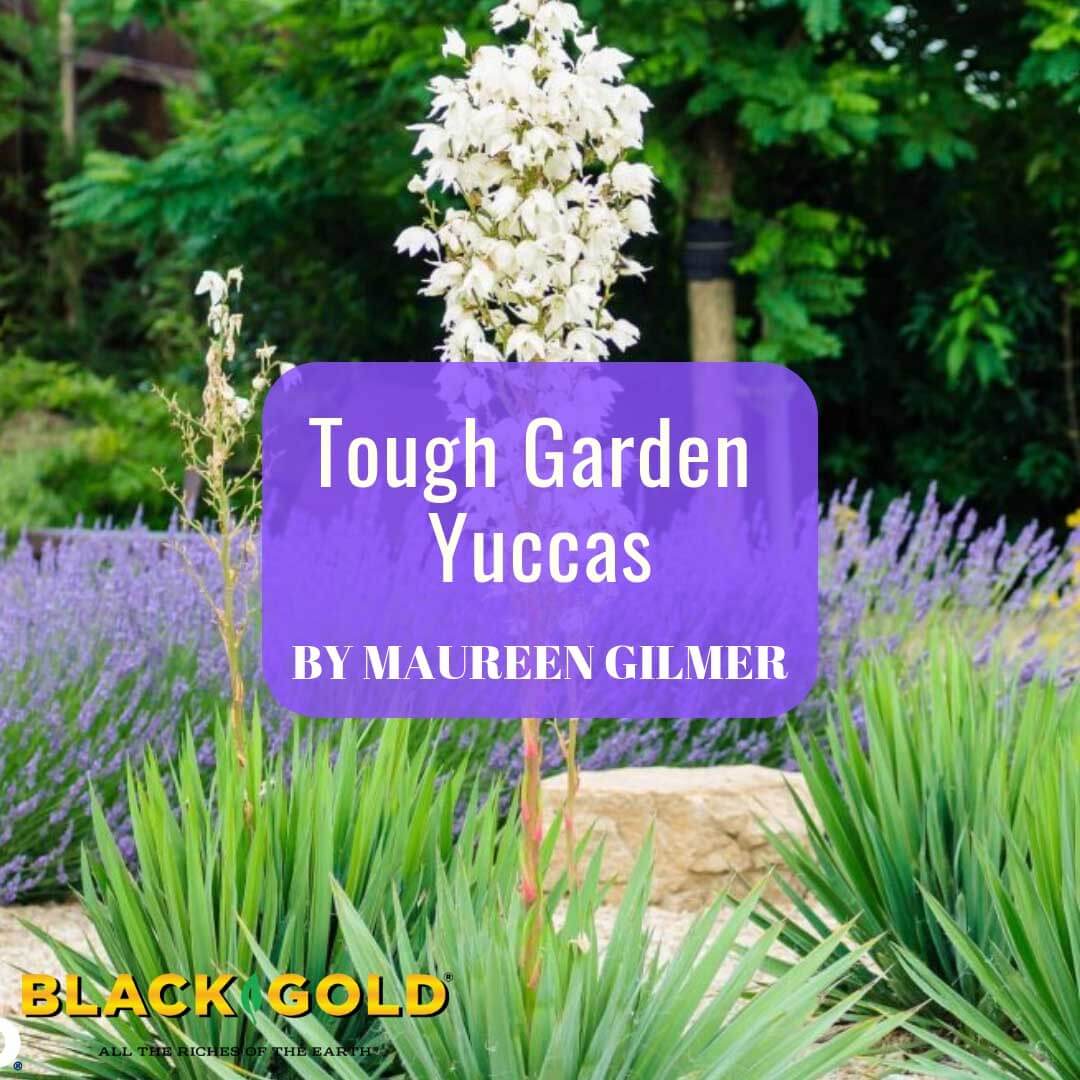
“This flower was made for the moon, as the Heliotrope is for the sun…and refuses to display her beauty in any other light.” This lovely Victorian quote, taken from the 1878 edition of Vicks Monthly Magazine, set off a fad for yucca plants. Though they flower in the sun, their blossoms become fragrant at dusk, releasing a seductive scent to draw their pollinators, yucca moths (Tegeticula and Parategeticula moth species). Yucca species depend on specific yucca moths for pollination, and yucca moths lay their eggs in yucca flowers where the young feed on some (but not all) of the developing seeds. Both moths and plants need one another for survival.
Growing yucca is a snap if you choose the right one. With so many species and new varieties available at garden centers, it can be mind-boggling. The best choices for those in yucca country are locally native species available in outdoor garden centers. These will be the best adapted to your region and most likely to bloom well.
Central and Eastern Yucca for Landscapes
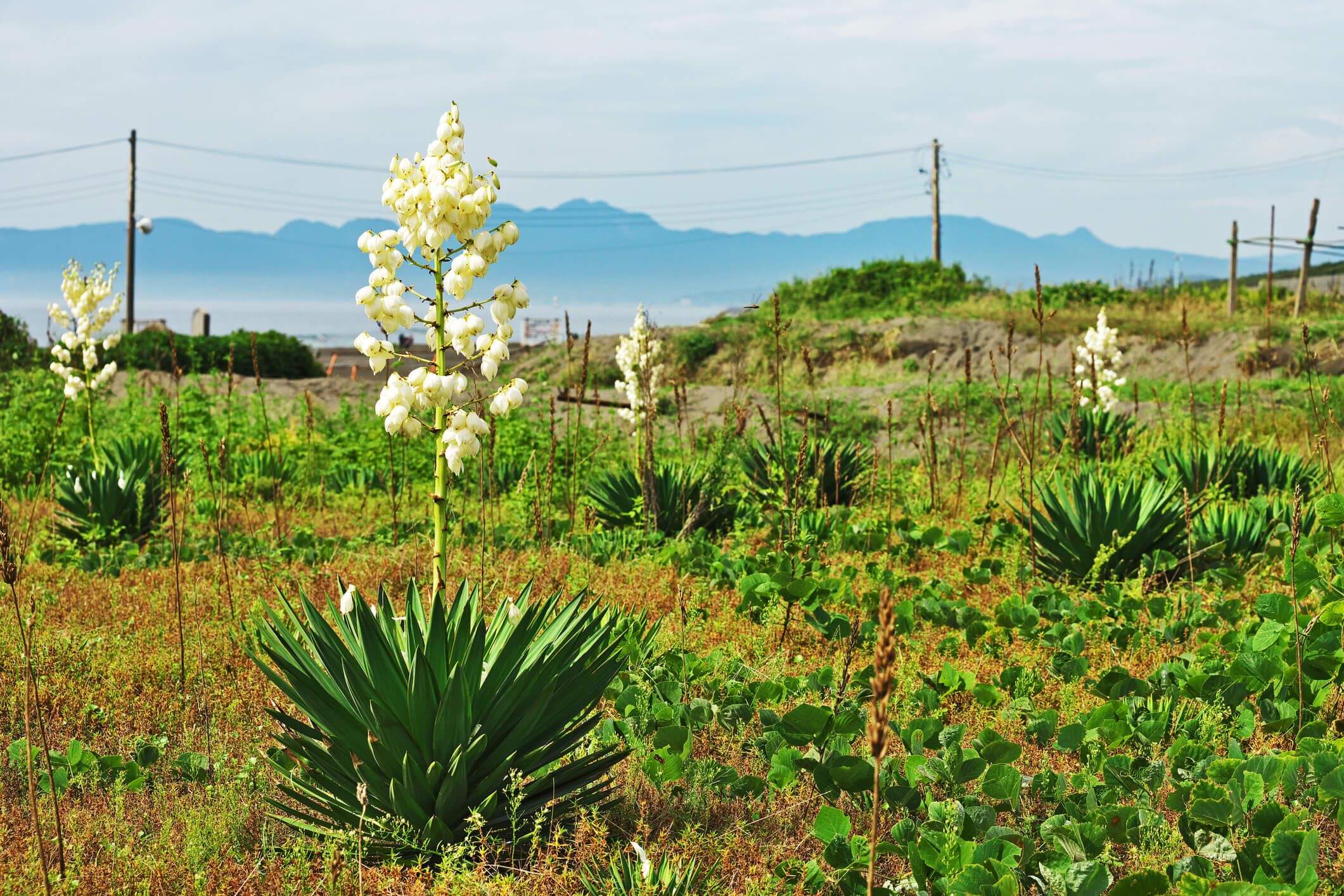
Yuccas may form single clumps, multiple clumps, or be tree-like. Clump-forming species are more prevalent in the East and Southeast coastal regions. Common garden-worthy forms include Adam’s needle (Yucca filamentosa), an eastern native that inhabits fields and open woodlands, the southeastern moundlily yucca (Y. gloriosa and Y. gloriosa var. recurvifolia) that inhabits coastal landscapes, and the Central US soapweed yucca (Y. glauca) of the dry plains. Spanish bayonet (Y. aloifolia) is a trunked species that inhabits southeastern coasts. These are more tolerant of regular rainwater and soils with clay, but all require well-drained soil and will withstand drought.
Western Yucca for Landscapes
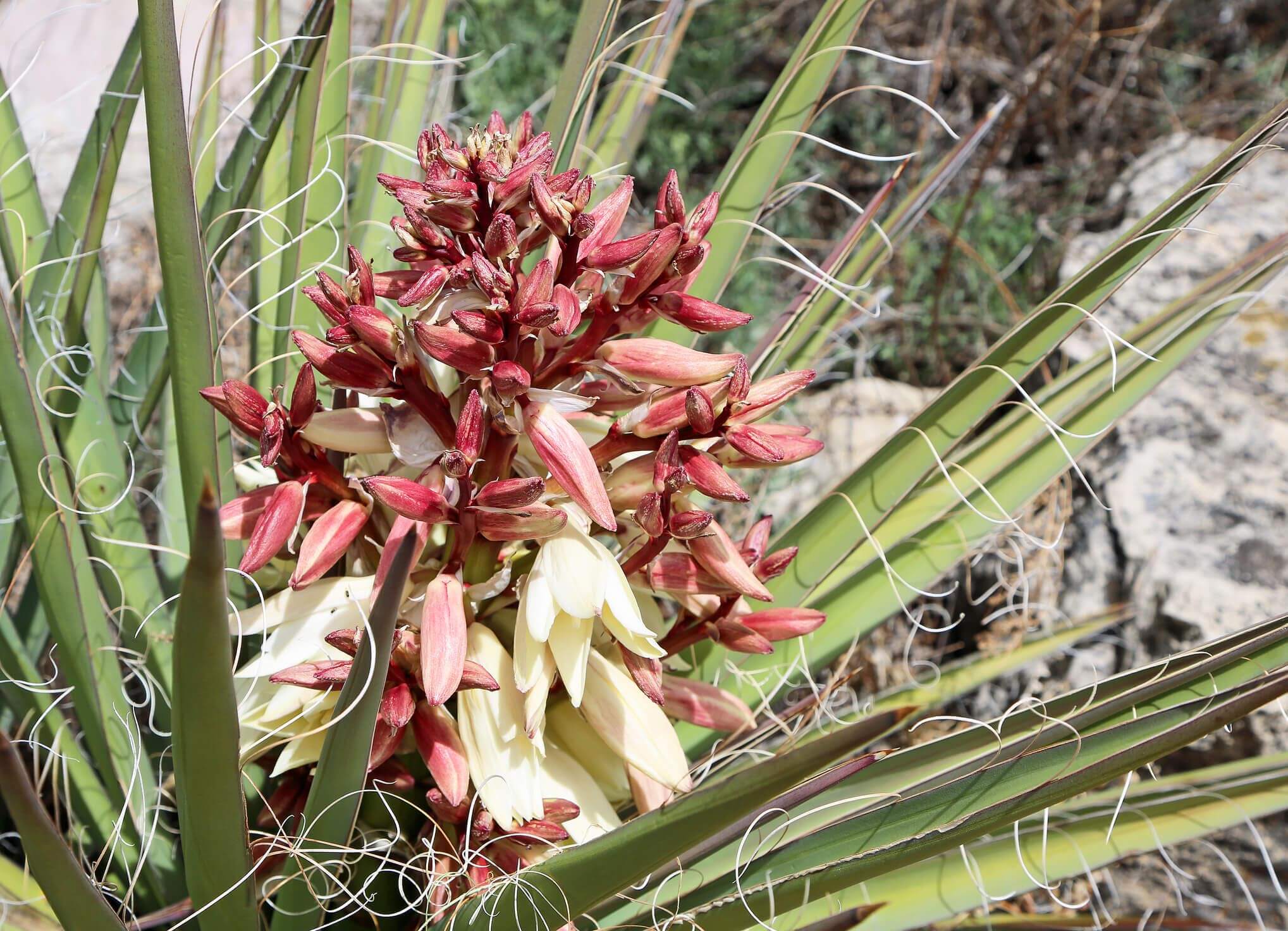
In the arid west, Yucca species are adapted to perpetual wind and nonexistent humidity. Species such as the clump-forming banana yucca (Y. baccata) and tree-like beaked yucca (Y. thompsoniana) have thicker leaves plus a hard outer skin that make them super desert hardy, but painfully slow growing. That means these are best purchased as mature specimens because young plants take so long to reach a visible landscape size. Arid yucca prefer south-facing, sloping ground with rapid drainage or naturally porous soils. That’s why it’s essential to know the origin of any yucca you’re considering, to make sure you get a proper fit with your microclimate.
Landscape yucca of all kinds have been getting a makeover; ordinary green-leaf species are now offered as variegated cultivars that you can buy at garden centers. These feature brightly striped or blue leaves and compact versions that are ideal for container gardens. Variegated forms may bring shades of bright gold, ivory, and mint green into the garden for year-round color.
Growing Yucca in Gardens
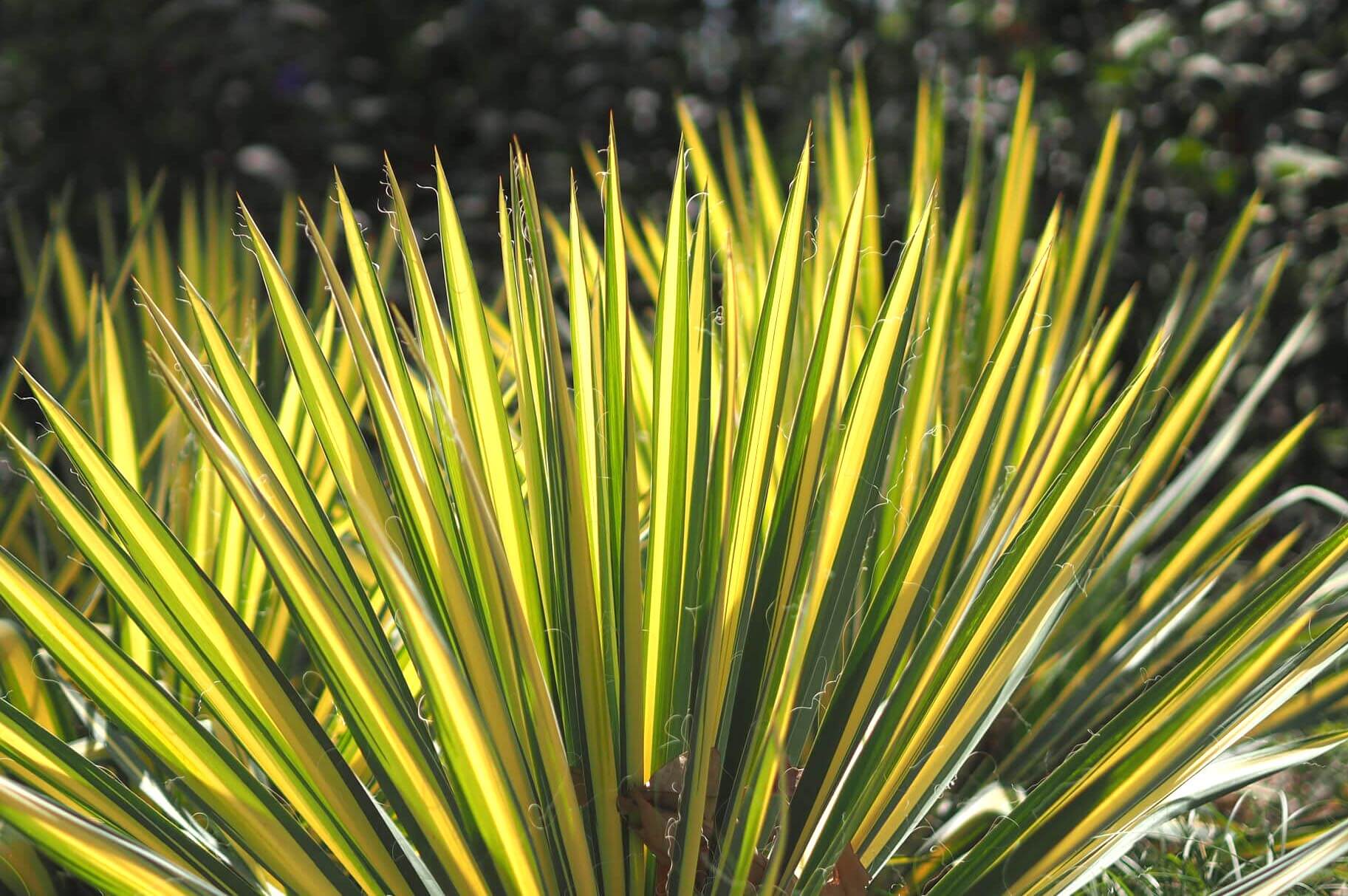
In the landscape, some yucca species develop a trunk-like growth with age, so they get taller with time. Others spread laterally, producing large clumps around the mother plant. Since there are so many species in cultivation, the list below identifies the most widely grown and available species for gardens. Different cultivated varieties may be available at the garden center, and though they may look different, grow them as you would the parent species.
Provide your yuccas with soils that drain well. Sandy or gravelly soil is often preferred, though Adam’s needle can withstand loamy soils. Be sure you know the hardiness of these sun lovers before planting them in the garden. Most landscape species are remarkably cold hardy, but the lack of winter light may be problematic for overall vigor. Southwestern species cannot withstand winter moisture.
Growing Yucca in Pots
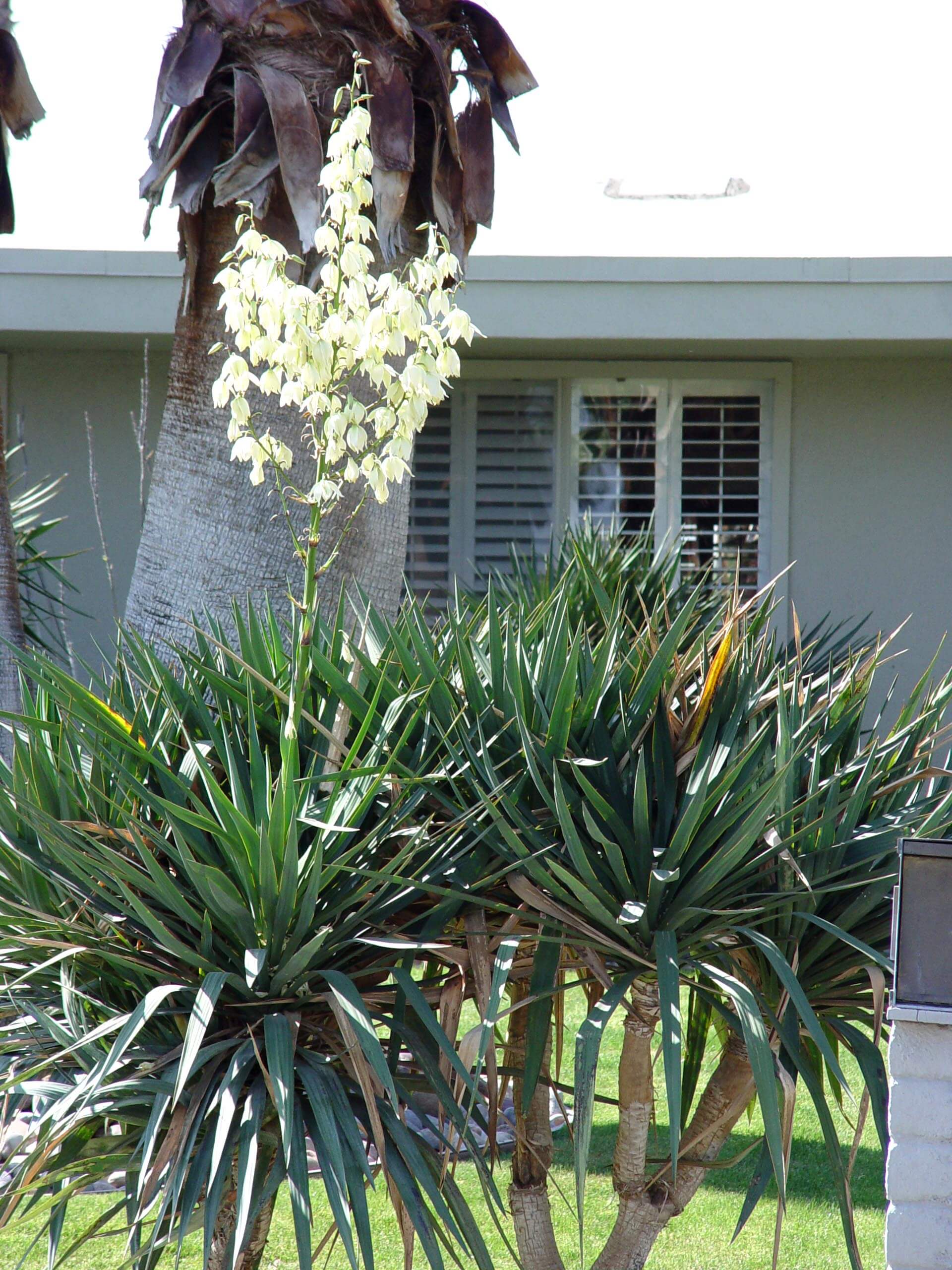
When growing yucca in a large pot, it’s best to make sure there is optimal flow for drainage. If you create a small gap between the drain hole and the underlying surface or saucer, the pot will drain more freely. Take at least 2 pieces of old tile, and slide them under the pot where you can’t see them. It is important to “gap” the pot with any arid plant grown in containers.
Juvenile yuccas do beautifully in pots. Plant them in porous Black Gold Cactus Mix instead of ordinary potting soil, so there’s less chance of overwatering them. Buy a youngster for a cute matching pot to enjoy up close. As it grows, pot it up into larger containers until it becomes a stunning mature patio specimen.
Unlike agaves that bloom once at the end of life, yuccas bloom each year with stalked iridescent sprays of snow-white blossoms. They shine in the moonlight reflecting light to lure their moth pollinators, so be sure to plant them where you can’t miss the show for full-moon viewing.
List of Common Yucca Species for Gardening
| Latin Name | Common Name | Form | US Region | Zone |
| Y. aloifolia | Spanish Bayonet | Tree-like | SE | 7-11 |
| Y. baccata | Banana Yucca | Clumping | SW | 7-11 |
| Y. filamentosa | Adam’s Needle | Clumping | SE | 4-9 |
| Y. gloriosa | Spanish Dagger | Tree-like | SE | 6-11 |
| Y. glauca | Soapweed Yucca | Clumping | C | 4-10 |
| Y. thompsoniana |
Beaked Yucca | Tree-like | SW | 6-11 |

5 Sustainable Ways Your Garden Can Help the Earth
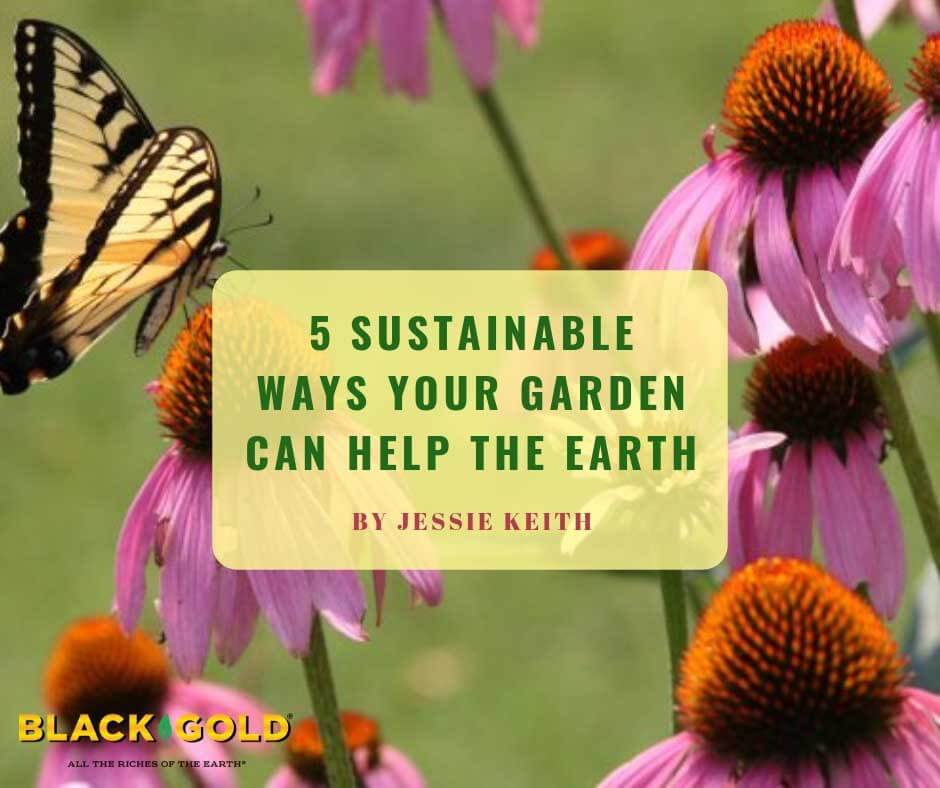
By default, gardens help the Earth by providing vital green space, but there are smart ways to boost a garden’s overall value—environmentally, socially, and economically. Some steps are small. For example, growing your own food organically takes little effort and offers big rewards with fresh, low-cost produce. Composting your own food scraps and fallen leaves reduces landfill waste and results in rich compost for your garden. Similarly, choosing the right garden plants will feed wildlife and make your yard more ecologically sound.
Though often overused and misunderstood, the word “sustainable” is essential in describing Earth-friendly approaches to gardening. As an ecological and social term, the word “sustainable” refers to “the long-term ability to maintain an ecosystem or human society” (Ecology Campus Network, John C. Ayers). In more practical terms, a sustainable home or garden is in a state of balance, consuming no more resources than it produces. A healthy garden that’s in balance ultimately gives back with good food and attractive green space that fuels local flora and fauna.
Here are five easy, important ways to bring sustainability to your yard or garden, no matter what the size.
(1) Create a Certified Wildlife Garden
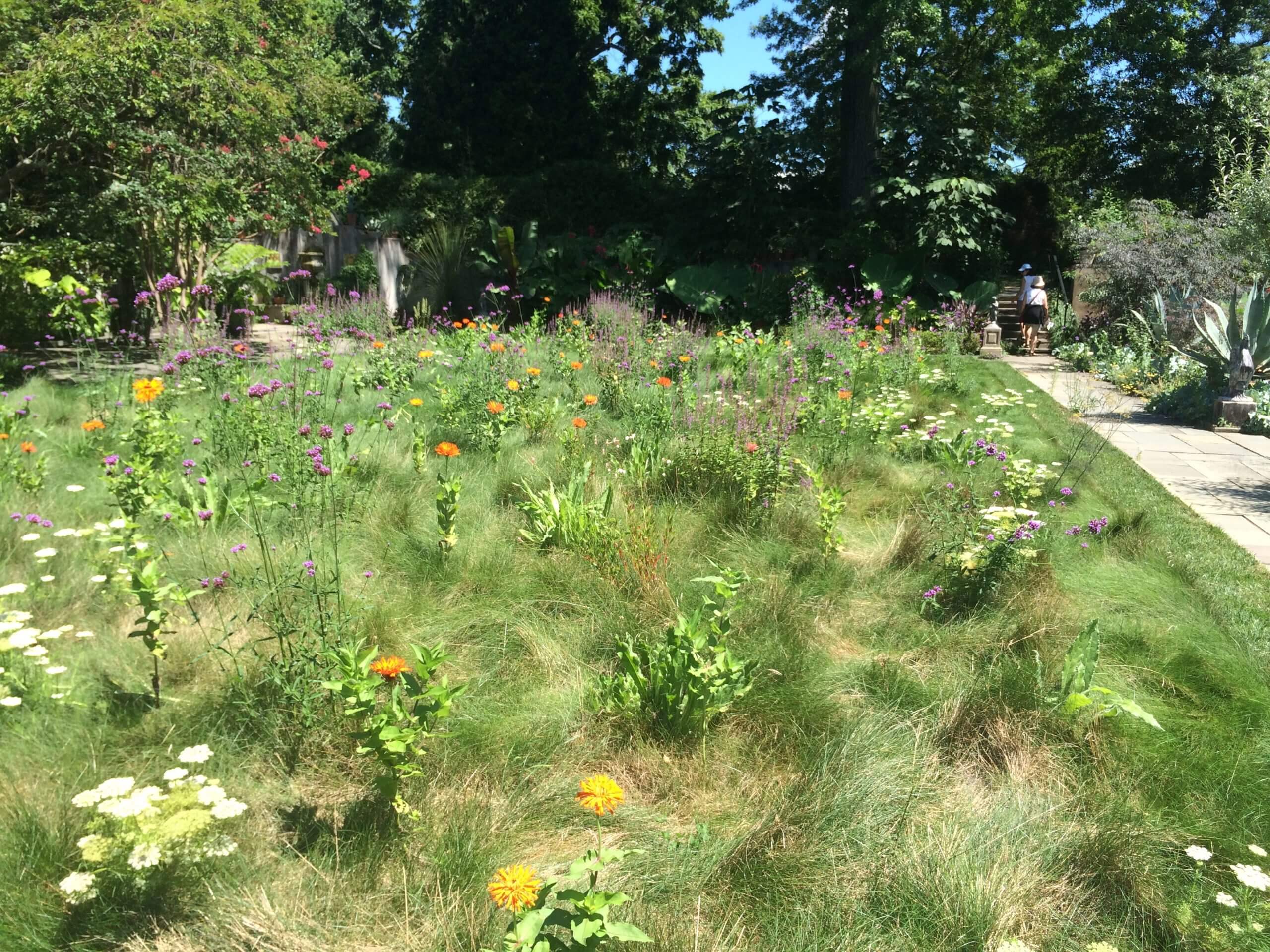
The National Wildlife Federation has made it easy to create a Certified Wildlife Garden in your own yard by providing a list of the steps needed to naturally feed wildlife. Several factors need to be considered if you want to certify your garden.
The first step is to ensure there are several types of natural, native food types in your garden, to include pollen/nectar, berries, nuts, and seeds. Next, you need a freshwater source for wildlife in your yard; this could mean a birdbath, fountain, or any natural water source near the house. Some form of natural cover is required, which could include shrubby areas, thickets, or wooded areas. The creation of spaces for animals to raise their young, via cover plants, larval food plants, or nesting boxes, are also required. Those with little space may choose to plant milkweed (the food plants of monarch caterpillars) or install a nesting box for songbirds. Finally, those with Certified Wildlife Gardens must commit to gardening sustainably. That means gardening organically, managing invasive exotic weeds, and helping to manage natural rainwater.
(2) Garden Organically
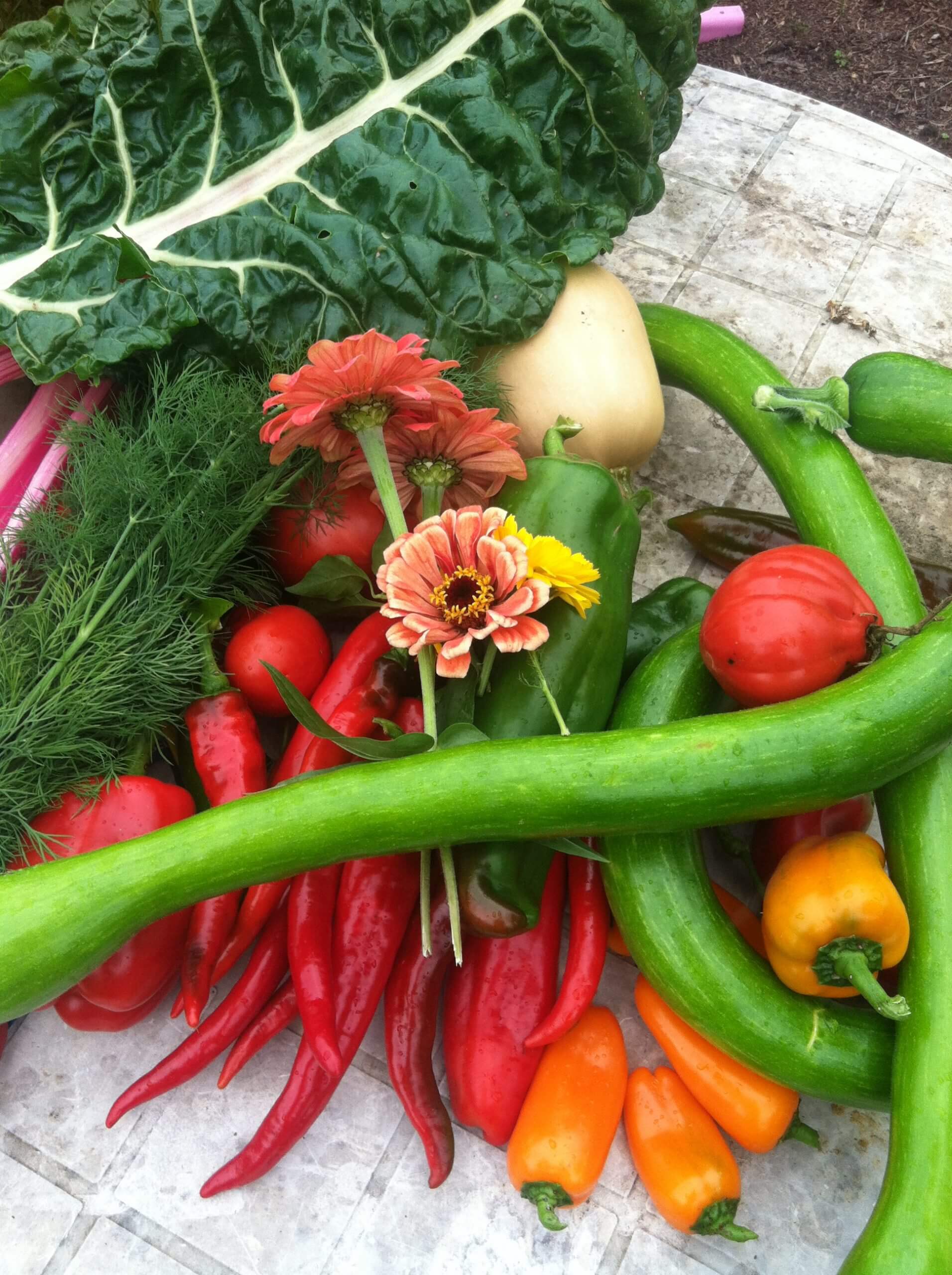
It is far easier to garden organically than most think. The key is to naturally feed your soil and plants, and choose resistant plants able to grow in your yard without the need for chemical fertilizers, pesticides, or herbicides. (Read more about resistance gardening and smart plant choices here.) Good plant care and management are also needed to safely stop unwanted pests and diseases from taking over your garden beds.
Feeding your soil with OMRI Listed amendments and fertilizers approved for organic gardening is essential. (Learn more about OMRI standards by clicking here.) Black Gold offers a wide array of OMRI Listed Amendments and Potting Mixes ideal for organic gardening. Just adding enriching compost and earthworm castings into your soil can make the difference between a mediocre gardening experience and a great one. Supplemental organic fertilizer will encourage your plants to grow and product to their fullest. Feeding plants with mixes enriched with the RESiLIENCE® additive has also been shown to boost their natural defenses.
Integrated Pest Management (IPM) is the long-term approach taken to safely managing pests, and organic growers achieve it without the need of unapproved chemical pesticides. (Click here to view the list of green pesticides approved for organic gardening.) Techniques include pest monitoring, biological controls, preventative garden cleanup, and the use of approved natural chemical controls. (Click here to download the full Organic IPM Field Guide.)
Finally, smart, chemical-free weed management will ensure your plants will have space and resources to really shine. Choose great weeding tools, such as the sturdy Rogue Prohoe or efficient Korean ho-mi (hoe-mee) hand tool, to make weeding easy. Manage weeds when they are still small, and apply lots of organic mulch to keep them from emerging. We recommend placing a 2″ layer of Black Gold Garden Compost Blend around your vegetables and garden flowers to keep weeds down. Other recommended natural mulches include seed-free hay, pine straw, and composted leaf mulch.
(3) Grow Your Own Food, & Share Your Harvest!
 If you garden using organic methods, then any food crops you grow will be pesticide free. What’s essential is choosing garden plants that are tough, resilient, and worry-free. Lots of fruits and veggies are easy-to-grow choices great for new gardeners. Carefree tree fruits for the garden include disease-resistant strains, such as crisp, sweet ‘Liberty’ and spicy golden PRISTINE® apples, fireblight-resistant ‘Moonglow’ pear, and darkest red. Easy spring vegetable crops include fast-growing lettuces, carrots, radishes, snap peas, and beets. The best non-stop summer crops for novice gardeners include tomatoes (Click here for tomato growing tips!), peppers, basil, and summer squash/zucchini. Finally, easy fall veggies include broccoli rabe, turnips, beets, and Swiss chard.
If you garden using organic methods, then any food crops you grow will be pesticide free. What’s essential is choosing garden plants that are tough, resilient, and worry-free. Lots of fruits and veggies are easy-to-grow choices great for new gardeners. Carefree tree fruits for the garden include disease-resistant strains, such as crisp, sweet ‘Liberty’ and spicy golden PRISTINE® apples, fireblight-resistant ‘Moonglow’ pear, and darkest red. Easy spring vegetable crops include fast-growing lettuces, carrots, radishes, snap peas, and beets. The best non-stop summer crops for novice gardeners include tomatoes (Click here for tomato growing tips!), peppers, basil, and summer squash/zucchini. Finally, easy fall veggies include broccoli rabe, turnips, beets, and Swiss chard.
If you have a healthy harvest, share it with your friends or the local food bank. Most communities have avenues for crop sharing. One of the best is Plant a Row for the Hungry (PAR), an effort sponsored by the Garden Writers of America and promoted by Sun Gro Horticulture. To find a local PAR representative and make a donation, click here. Local food banks are always willing to take extra produce from overly successful gardeners. Feeding America also has a Food Bank Finder that will make finding your nearest food bank easy.
(4) Choose Regional Native Plants
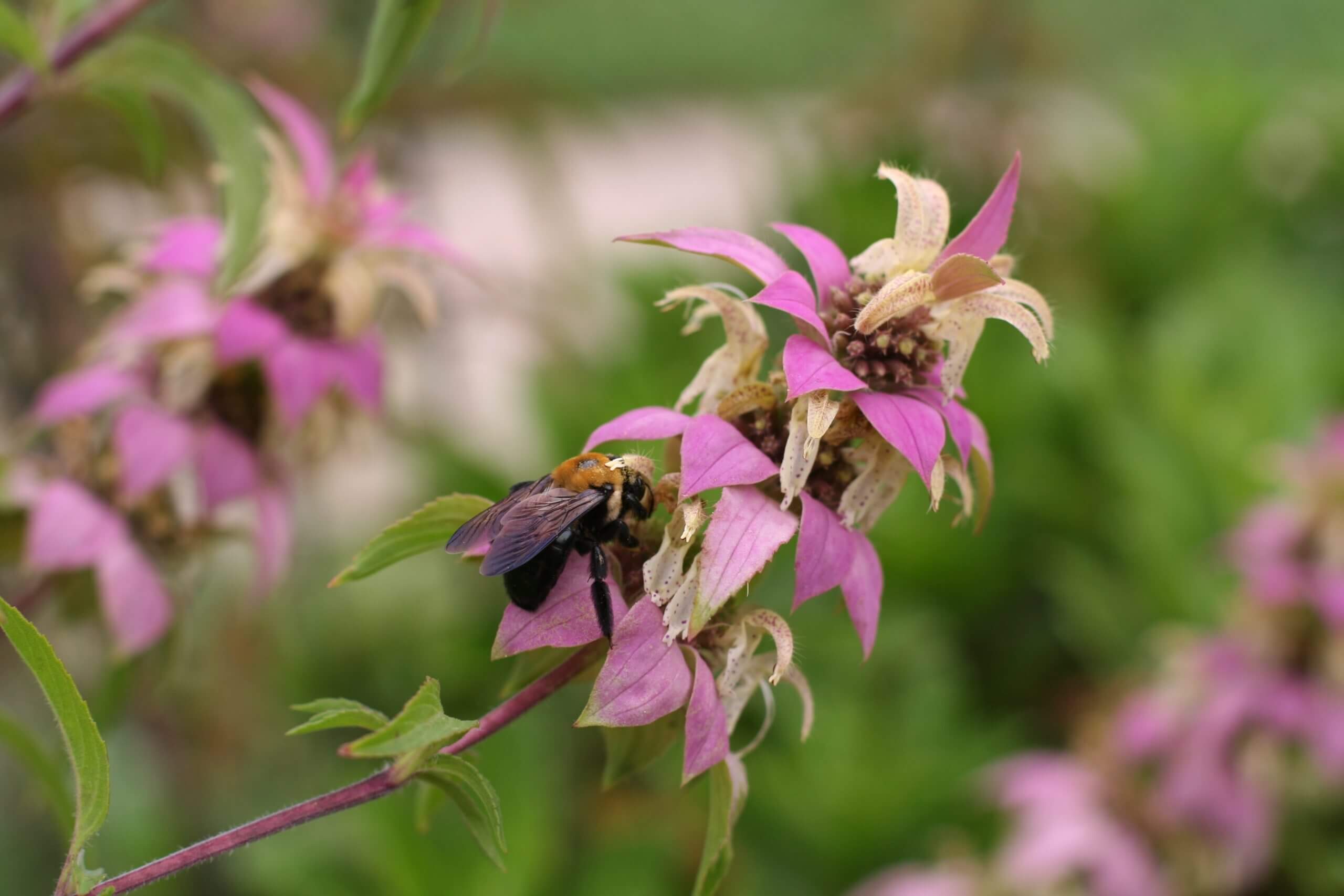
Regional natives and adapted landscape plants grow best in local landscapes and have the added bonus of feeding local wildlife. There are many good resources gardeners can turn to to find the right ornamental plant choices for their landscapes. One such resource is Landscape for Life, a national effort dedicated to helping gardeners garden sustainably. The principals of the program are based on the Sustainable Sites Initiative™ program (SITES™), a comprehensive program used by industry professionals to maintain sustainability standards. Landscape for Life offers guidelines for choosing the best natives for your landscape. The partnering organization, the Lady Bird Johnson Wildflower Center, has a comprehensive Native Plants Database that allows gardeners to search for desirable regional natives for their area.
(5) Compost Green Scraps & Yard Waste
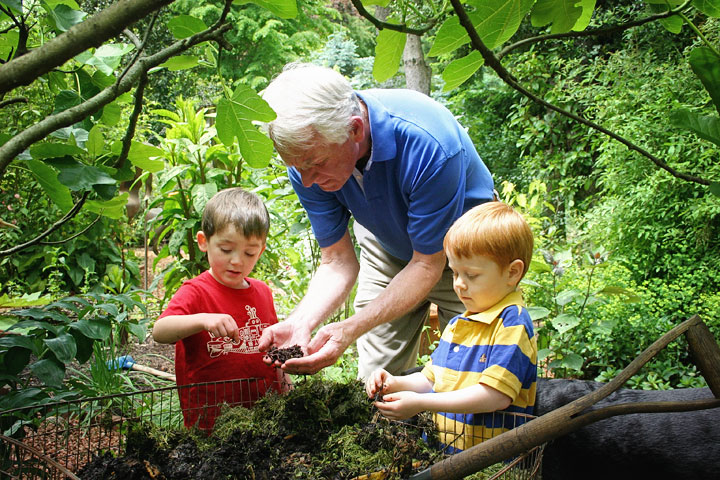
Composting takes less effort than most gardeners think. It’s a fast, easy way to get rid of organic kitchen scraps, grass clippings, and autumn leaves, and the end result is a great natural amendment for the yard and garden. Start by choosing a composter—whether purchased or made. Spacious, self-made composters are great if you have the space for them (Click here for plans).
There are three things required to make good compost fast: small organic waste, water, oxygen, and nitrogen. Add vegetable scraps, grass, and leaves, but refrain from adding large sticks, bones, or meat products (unless you want a smelly pile that attracts raccoons and rats.) The pile needs to be at least 4 feet high and wide to generate enough internal heat to properly compost. Refrain from 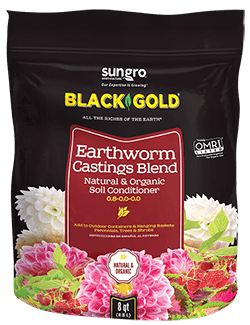 packing pre-composted scraps tightly; good aeration helps the composting process.
packing pre-composted scraps tightly; good aeration helps the composting process.
For fast breakdown, piles must be kept moist, occasionally turned for aeration, and intermittently treated with supplemental nitrogen to help the process. An occasional sprinkling of Black Gold Earthworm Castings, which is rich in nitrogen, can aid the composting process.
After a month or so, the pile should be hot in the center and start breaking down into compost. Properly decomposing piles will shrink. Well-tended compost takes 4 to 8 months to mature. The final product should be dark, soil-like, and crumbly.
Make a Resolution!
Embrace the New Year by upping your garden’s value through sustainable practices. Taking one or two of these steps to increase your garden’s “green” value may seem small, but imagine the impact if all gardeners took a similar approach. As gardeners, we truly can help the Earth one step at a time!
Everblooming Bedding Plants for Heat and Drought
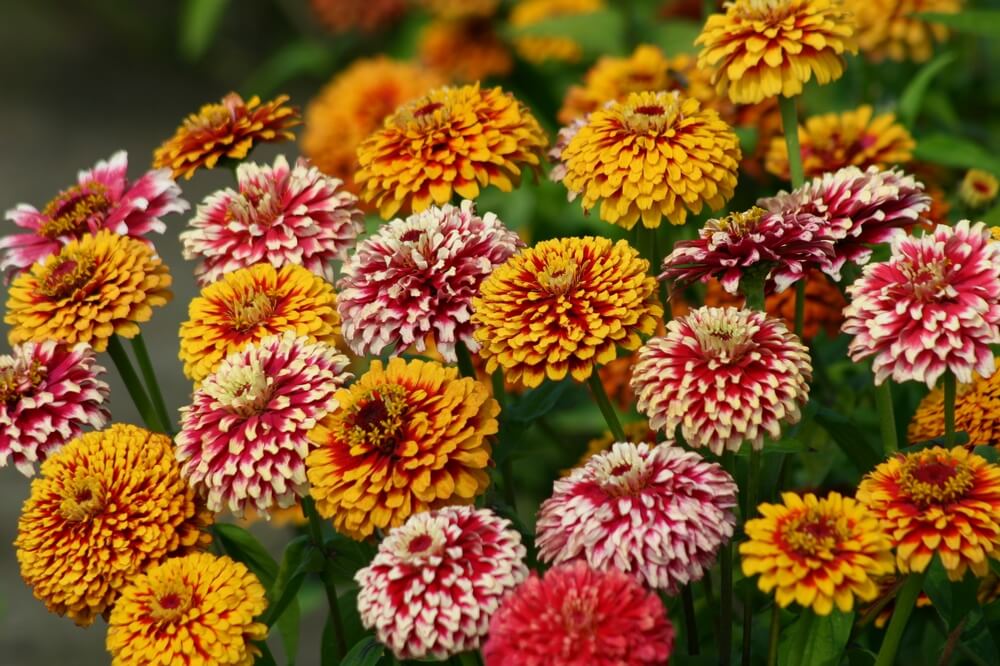
Finding garden flowers that bloom effortlessly through the hot, dry summer months can be a challenge for those new to gardening. So many popular bedding plants are tender and water needy. Impatiens, coleus, dahlias and even petunias will quickly flag when the heat and drought ramps up. But, have no fear. Lots of bedding plants will make it through the worst of the summer weather. Some even shine—blooming effortlessly all summer long.
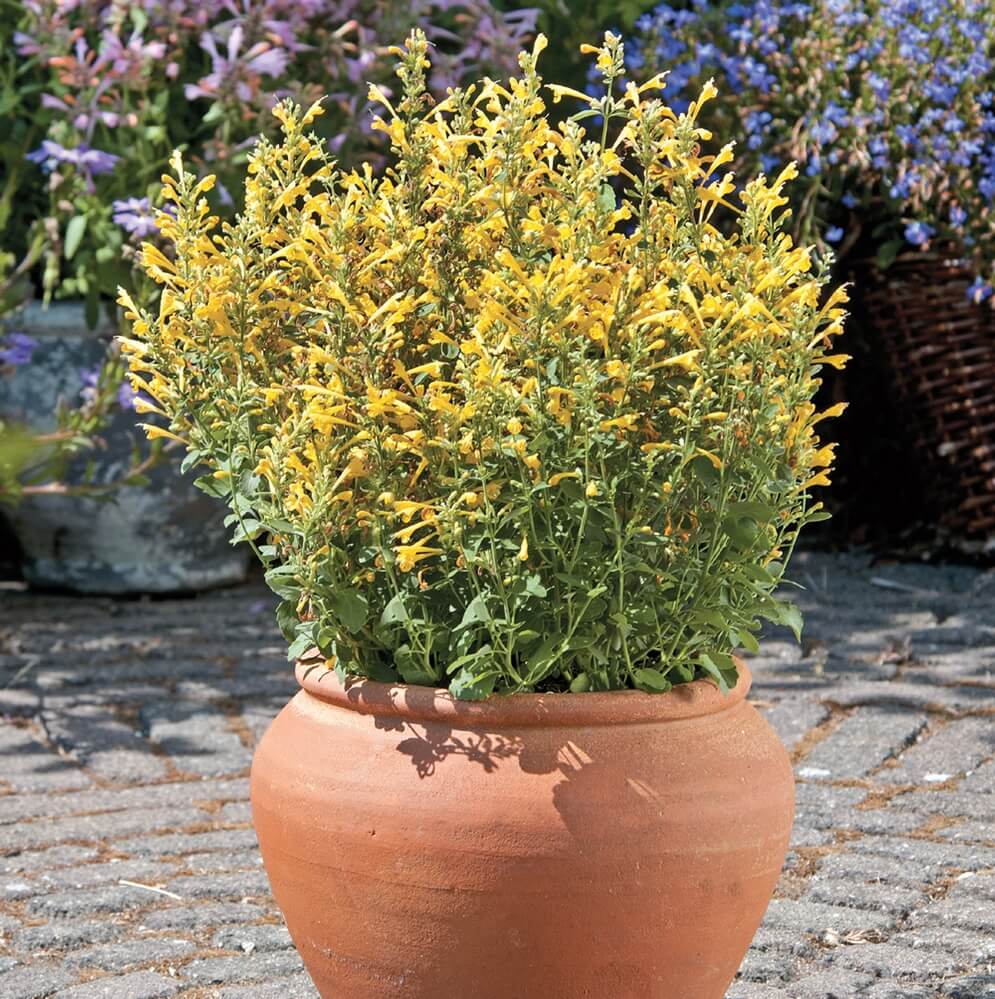
When choosing “hot” summer flowers, I like to think of their origins. Resilient selections come from sultry climates, like Mexico, Africa, the American South, and hot, dry regions in the Mediterranean. They’re adapted to hot weather. Agastache, angelonia, cuphea, salvia, marigolds, and zinnias are several excellent choices. Exciting varieties are generated each year, making it easy to fill the garden with beautiful flowers sure to shine.
Hummingbird Mint
Hummingbirds love the sunny flowers of agastache (otherwise known as hummingbird mint) and the blooms shine through summer in containers or garden beds. They’ve been a standby in my garden for the last 20 years because they are so beautiful, fragrant and easy. Many new resilient varieties make gardening and crafting colorful flower combos easier than ever. The new Agastache Arizona™ Sun and Arizona™ Sandstone, with their gold and soft orange blooms and foot-high statures, will bloom through hot, dry weather and mix well with many similarly tough garden flowers. Though hybrids, the parent plants originate from the American Southwest—a testament to their ability to take the heat.
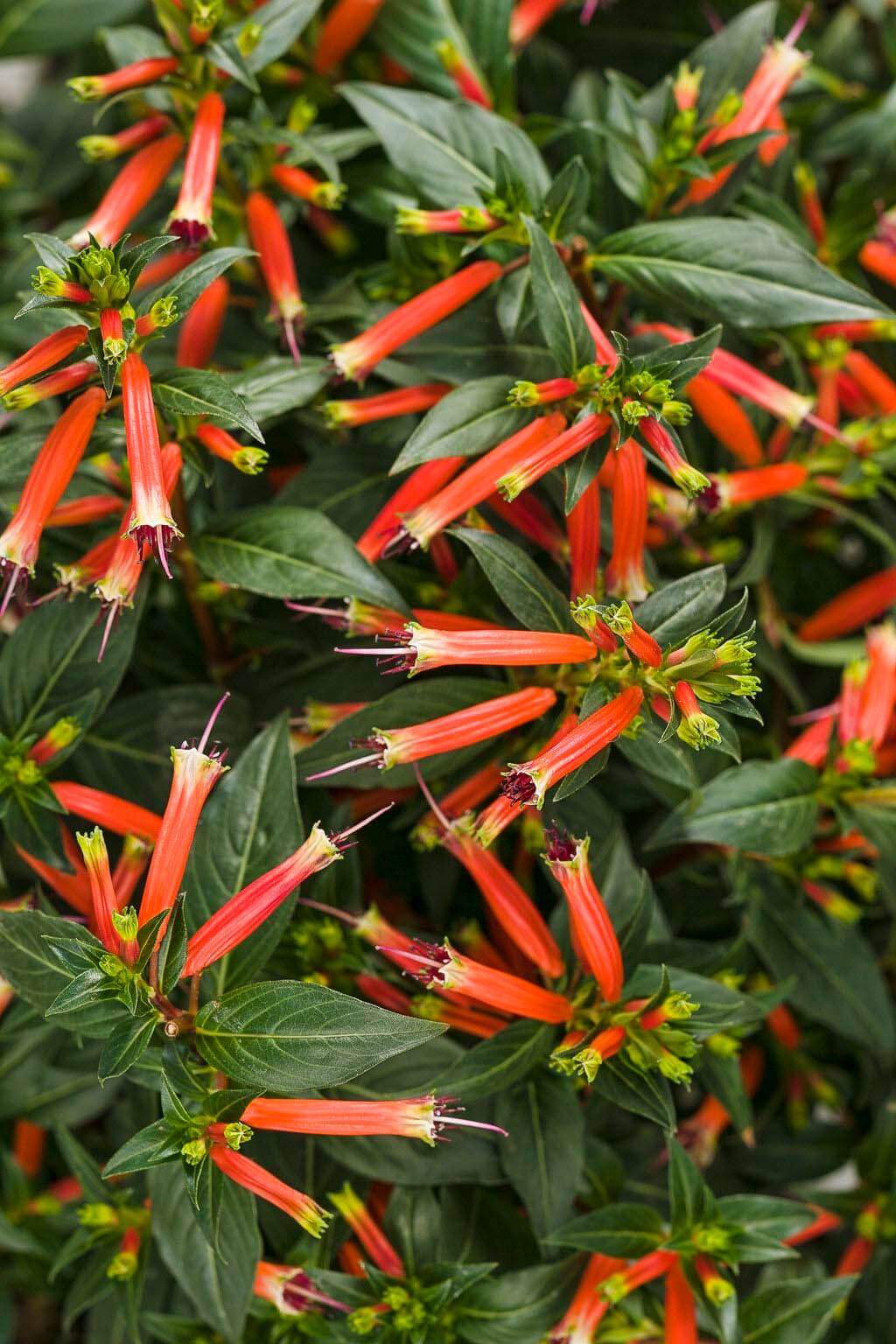
Angelonia
The Mexican native narrowleaf angelon (Angelonia angustifolia) produces snapdragon-like spikes of white, purple and pink flowers through summer months. Of these, the carefree bloomers in the Serena™ Series have won multiple awards (Mississippi Medallion Award, Dallas Arboretum FlameProof Award, Louisiana Super Plants Award) for their high performance and ability to stand up to summer heat. The breeders claim: “Plants grow up to 50% larger in Floridalike conditions.”
Firecracker Plant
Gardeners with large, sunny, South-facing beds should consider planting the big, bushy firecracker plant, Cuphea Vermillionaire™. New from Proven Winners, the bushy plants reach around two feet and become laden with lots of orange-red, tubular flowers that are a hummingbird mainstay. A strong tendency to rebloom until frost makes this a superb bedding plant as does its high tolerance to hot, dry weather.
Scarlet Sage
In late summer, I always rely on colorful scarlet sage (Salvia coccinea) to add bright garden color up until frost. And, these natives of the American South and Mexico are made for hummingbirds! The tall species gently self-sows, so I simply dig the seedlings and place them where I want them, but that doesn’t keep me from planting a few choice varieties as well. The AAS- and Fleuroselect-winning varieties in the Summer Jewel™ series are compact (reaching one and a half to two feet), bloom continuously, and come in shades of red, pink, and white.
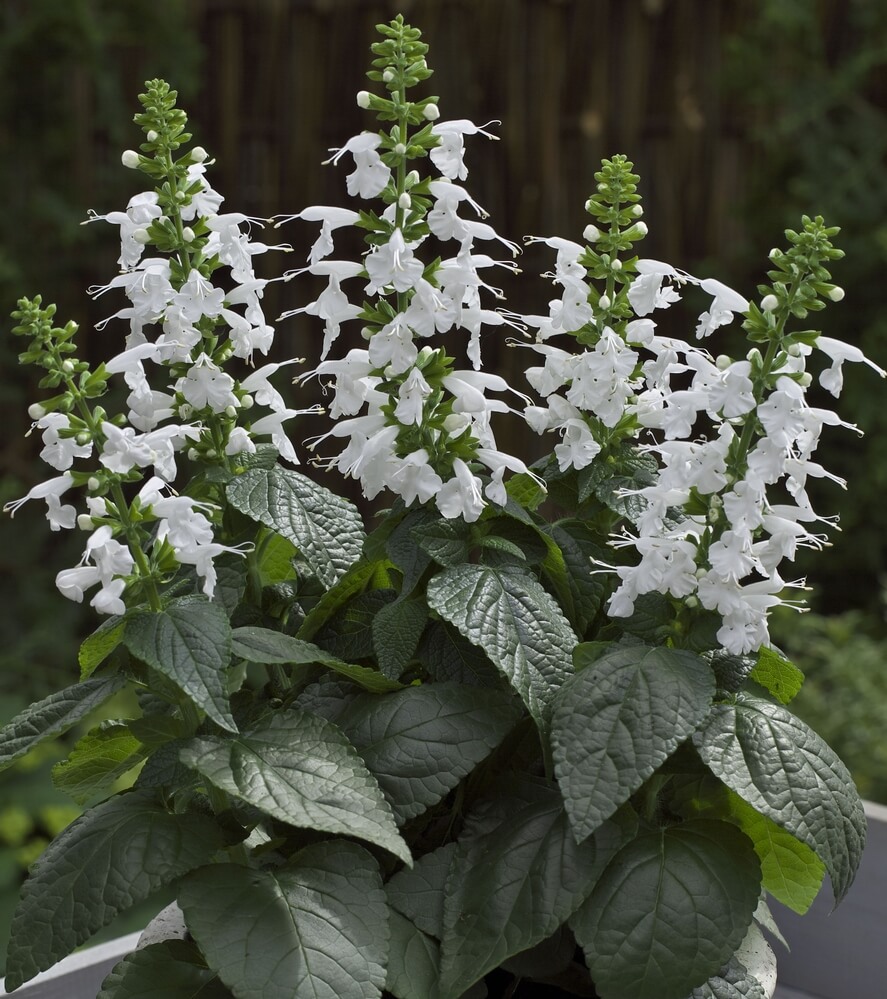
Marigolds
Once established, marigolds are made for summer with their nonstop flowers in flame colors. The tall, Garland Orange African marigold (Tagetes erecta ‘Garland Orange’) bears huge, long-stemmed flowers on strong, bushy plants less apt to topple over in the wind. Plants reach three feet, making them a great choice for colorful, back-of-the-border fillers.
Zinnia
There’s always a place in my garden for zinnias. Not only do they make great cut flowers, but newer varieties flower effortlessly with little deadheading (removal of old blooms). The new Sasiando mix, which comprises Zinnia ‘Macarenia’, with gold and orange double blooms, and ‘Mazurkia’, with ivory and red double blooms, attracts butterflies in a big show of flowers. Both are high performers in sweltering summer weather and their bushy plants reach two to three feet. Deadheading is not necessary but may keep plants looking prettier.
Plant a few of these water- and heat-wise plants and your flower garden will be smiling through even the most scorching days of summer, with moderate care and watering. Give them a boost with an OMRI Listed flower food and top-dress with Black Gold Garden Compost Blend and keep the sunny blooms and bouquets coming!
Gardening for Bats
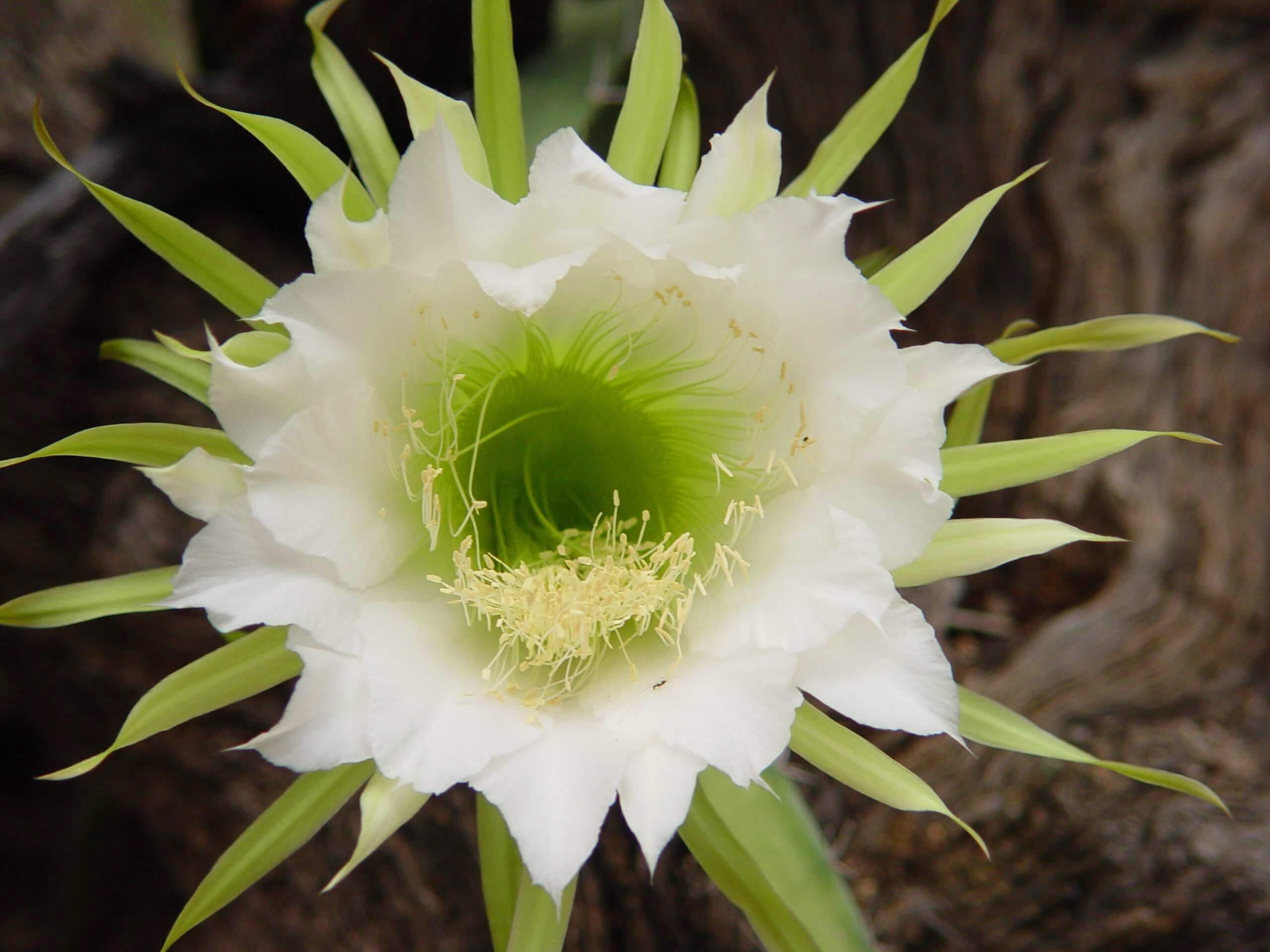
It’s curious that an agave that flowers once at the end of life produces such an enormous bloom stalk. These can range from 5- to 15-feet tall, depending on the species. Many of the flowers are clustered at the very top, which is an adaptation for one particular pollinator, the bat. Because bats use echolocation to guide them, it can be more difficult to navigate their way through brush and thickets. So naturally a plant that seeks these night-flying pollen vectors would raise its flowers above the brush where they are easily accessed by bats. Without bats there would be minimal pollination of these plants, which are the primary source of tequila production.
At sunset 30 million freetail bats emerge from Bracken Cave in Texas to consume 250 tons of insects every night. A single brown bat can catch and eat up to 1000 mosquitoes per hour! Bats are indeed our most effective insect problem solvers so they deserve a place in our gardens.
Bat Pollination

Bats pollinate saguaro (bat pollination is called “chiropterophily”) and other tall cacti that bloom at the very top to facilitate these visitors. Vine cacti use trees to raise their flowers for bats both the in desert and tropics. These enormous snow-white blossoms lure the bats throughout the night when they burrow into the mass of stamens to reach nectaries at the base of the bell-shaped throats. These flying mammals are known to grasp stiff parts of the flower with their claws while they feed, which scientists use as evidence of pollination.
Bat flowers also bear unusually large numbers of pollen-laden stamens because these animals also eat pollen during their visits. Pollen that catches on the hairs of a bat’s body allow them to fertilize a surprisingly large number of plants in a single night. Studies show that one bat can carry about 1.5 million grains of pollen each evening, which translates to around 30 different flower visits.
Western Flowers for Bats
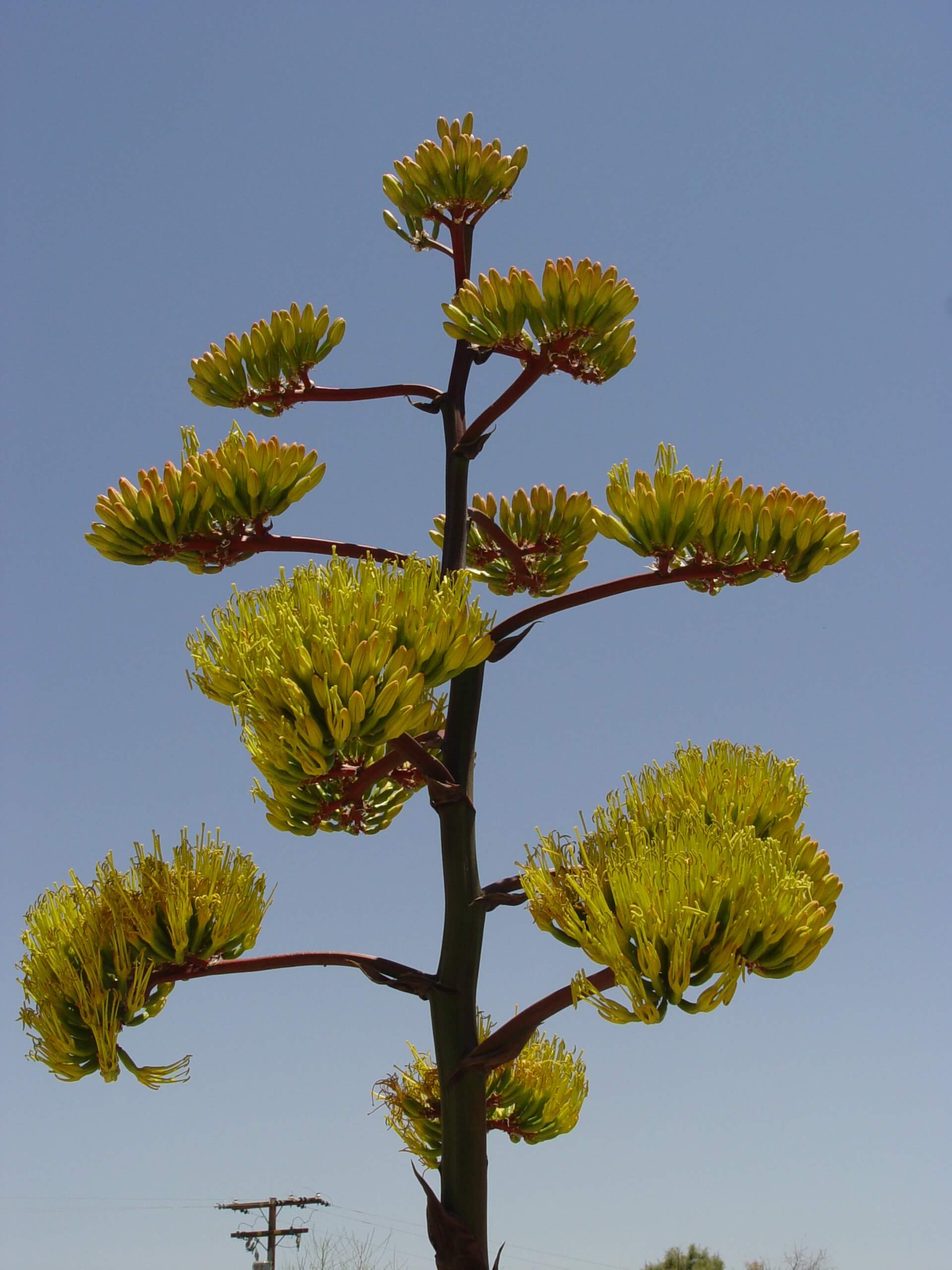
To lure local bats to your yard, where they consume from 600 to 1000 mosquitoes per night, grow their favorite flowers, which are produced by night-blooming cereus (the name for a number of large-flowered, vining ceroid cacti) . One of the best of these vine-like cacti is fondly dubbed Queen of the Night (Hylocereus undatus). The vanilla-scented night-blooming cereus (Selenicereus grandiflorus) is another similar species for bats. Both are vigorous species for frost-free climates, where they are best planted under trees or patio cover (where there’s mild frost) or in greenhouses. Elsewhere you can enjoy them outdoors during the warm season and bring it inside for winter before the first frost. Winter it over on a sun porch or bright south-facing window.
The blooms of Agave are also favored by bats, though most species bloom rarely, sometimes taking as long as 80 years as with century plant (Agave americana). It literally takes an entire lifetime for each single plant rosette to save up enough fuel to flower. When it is time to flower, they send up flower stalks, much like a head of lettuce does in early summer. Some Agaves can produce enormous bloom stalks up to 20 feet tall, with nectar rich flowers raised high for accessibility to bats.
Growing Flowers for Bats
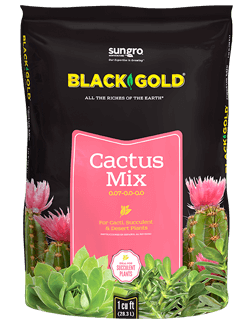 Vine cacti grow as hanging plants, so they’re easy to move around with the seasons. Grow this one in a hanging moss basket that ensures there’s rapid drainage with no chance of over watering. Fill it with Black Gold Cactus Mix potting soil to maintain good drainage throughout the summer, so even if there’s rain, it will still thrive.
Vine cacti grow as hanging plants, so they’re easy to move around with the seasons. Grow this one in a hanging moss basket that ensures there’s rapid drainage with no chance of over watering. Fill it with Black Gold Cactus Mix potting soil to maintain good drainage throughout the summer, so even if there’s rain, it will still thrive.
When planting Agave in pots, choose a container that is wide enough to contain the Agave and have at least 2 inchs or more free space on all sides to allow for new growth, watering space, and surface evaporation. Place a square of mesh over the drain hole to prevent erosion of soil from the bottom of the pot. Then open a fresh bag of Black Gold Cactus Mix, a fast-draining medium containing a blend of perlite/pumice or cinders, earthworm castings and compost. It encourages vigorous growth while ensuring ample aeration and drainage. [Read how to prepare outdoor gardens beds for Agave here.]
As we all discover a new appreciation of living green and supporting the ecology of the earth, don’t relegate bats to the world of draconian folklore. Support them and their pollination efforts by bringing plants and flowers they feed on into your garden.
Reviving Late-Summer Flowers
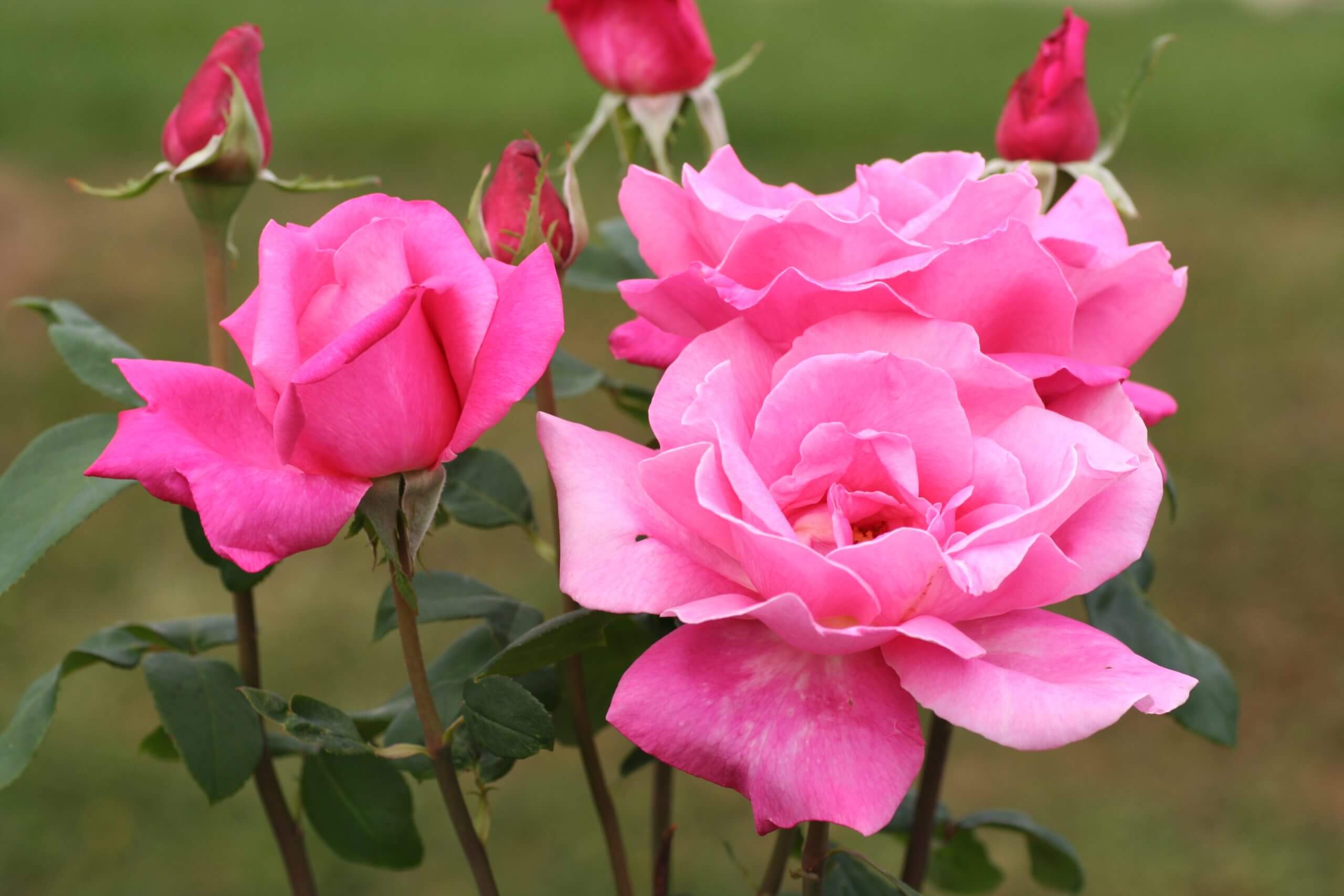
Perhaps we have been through the “dog days of summer” here in the Pacific Northwest with our daytime temperatures reaching 90+ degrees. Not only have those of us without air conditioning suffered, but many of our plants did as well.
Continue reading “Reviving Late-Summer Flowers”
Hummingbird Gardening with Black Gold
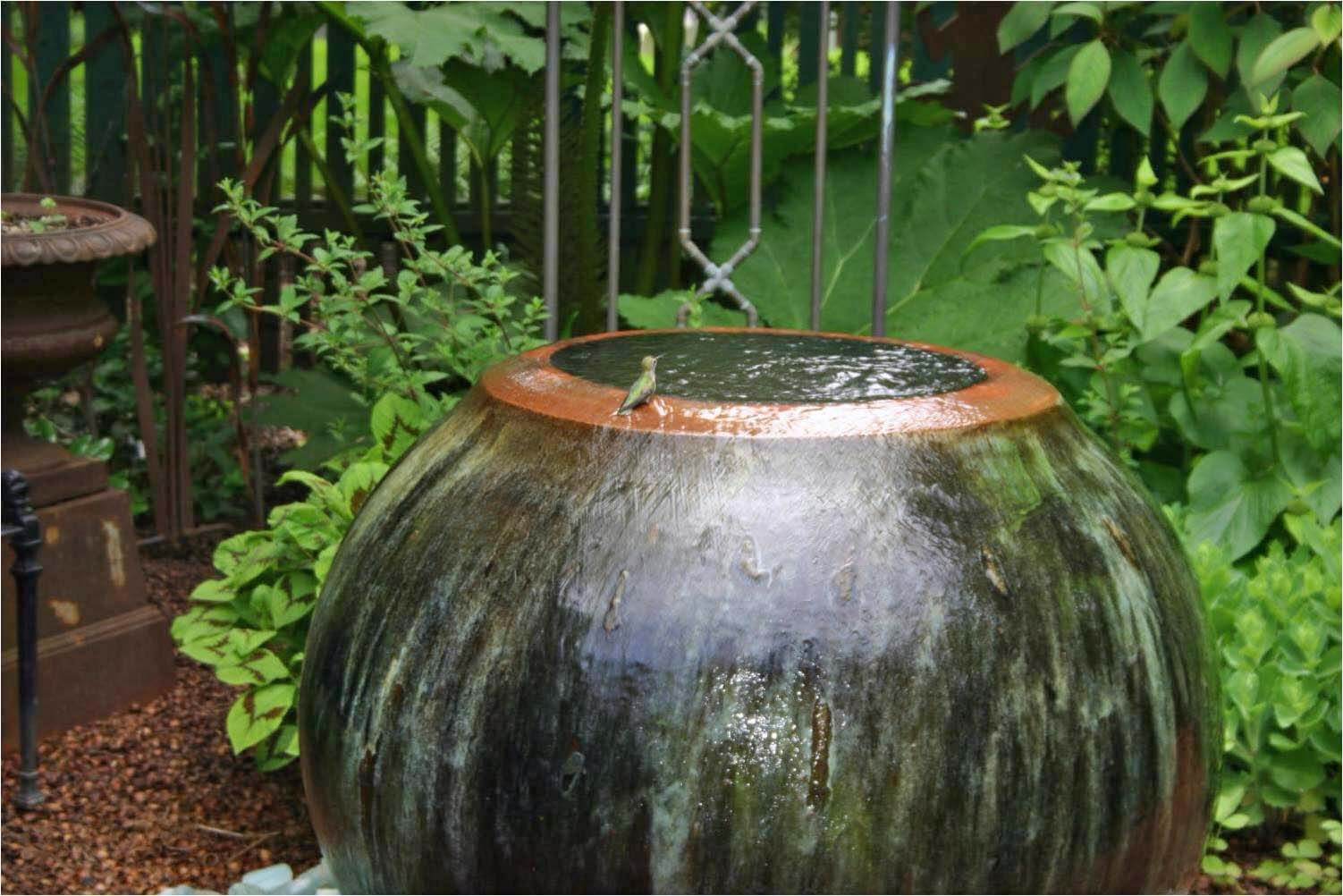
In addition to enjoying summer color from my plants, I always have an assortment of plants that will attract hummingbirds. With the many containers that are on my deck and the surrounding garden area, I always select some plants that are known to be hummingbird magnets.
Foxgloves: Bee Plants for Every Garden
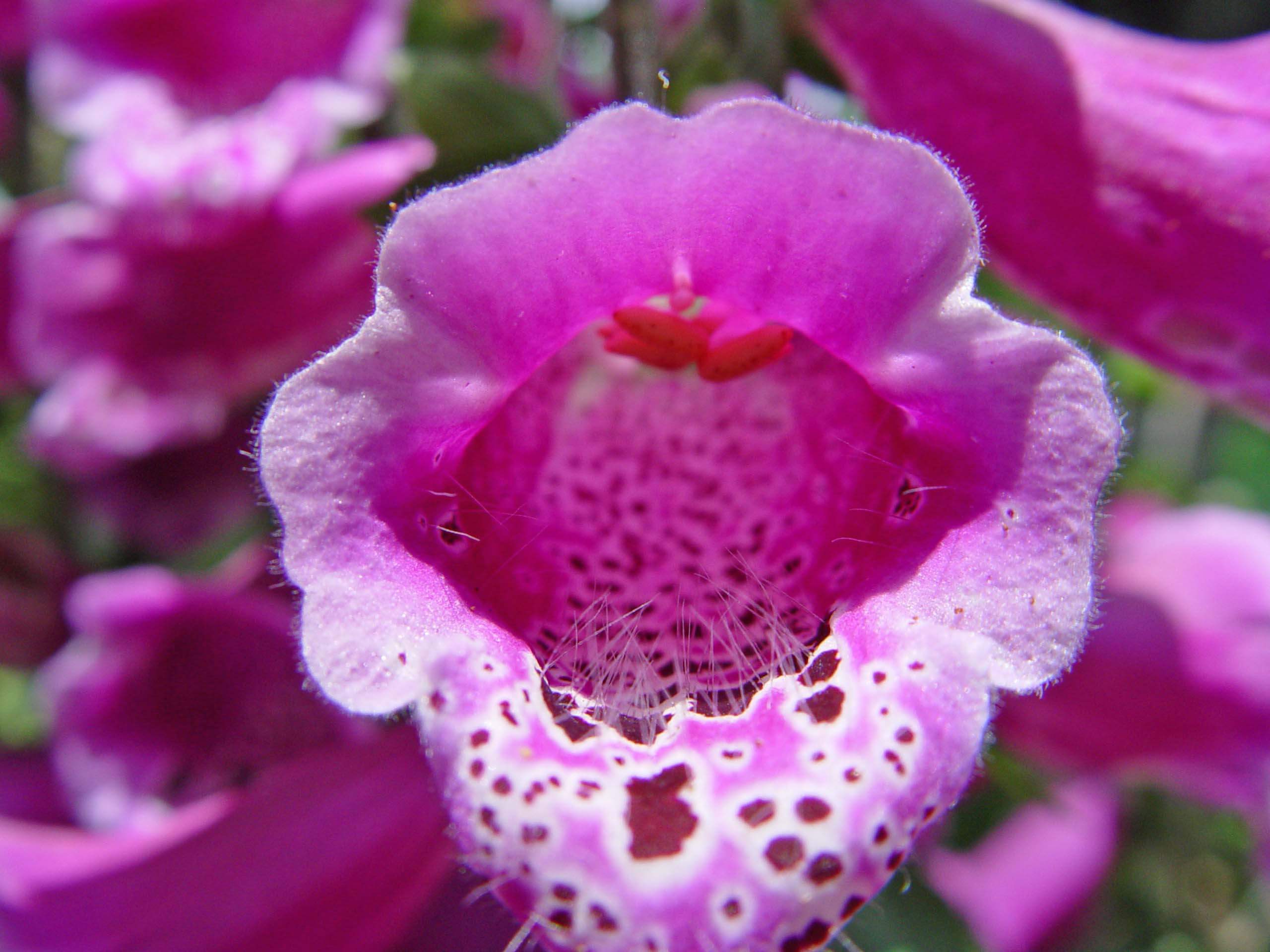
Everyone is buzzing about bees because these vital pollinators need safe habitats where they can freely live and feed. The problem for many who don’t have space to grow bee plants is how to support these amazing insects. Even if you have just a small apartment or condo balcony, you can do your part to care for bees by growing a few outstanding bee plants. And of these plants, foxgloves (Digitalis spp.) are some of the best early summer bloomers for bees. Grow foxgloves in large pots to see the bees visit the colorful flower spikes while you relax and watch them work.
Big, Bold, Beautiful Blooms
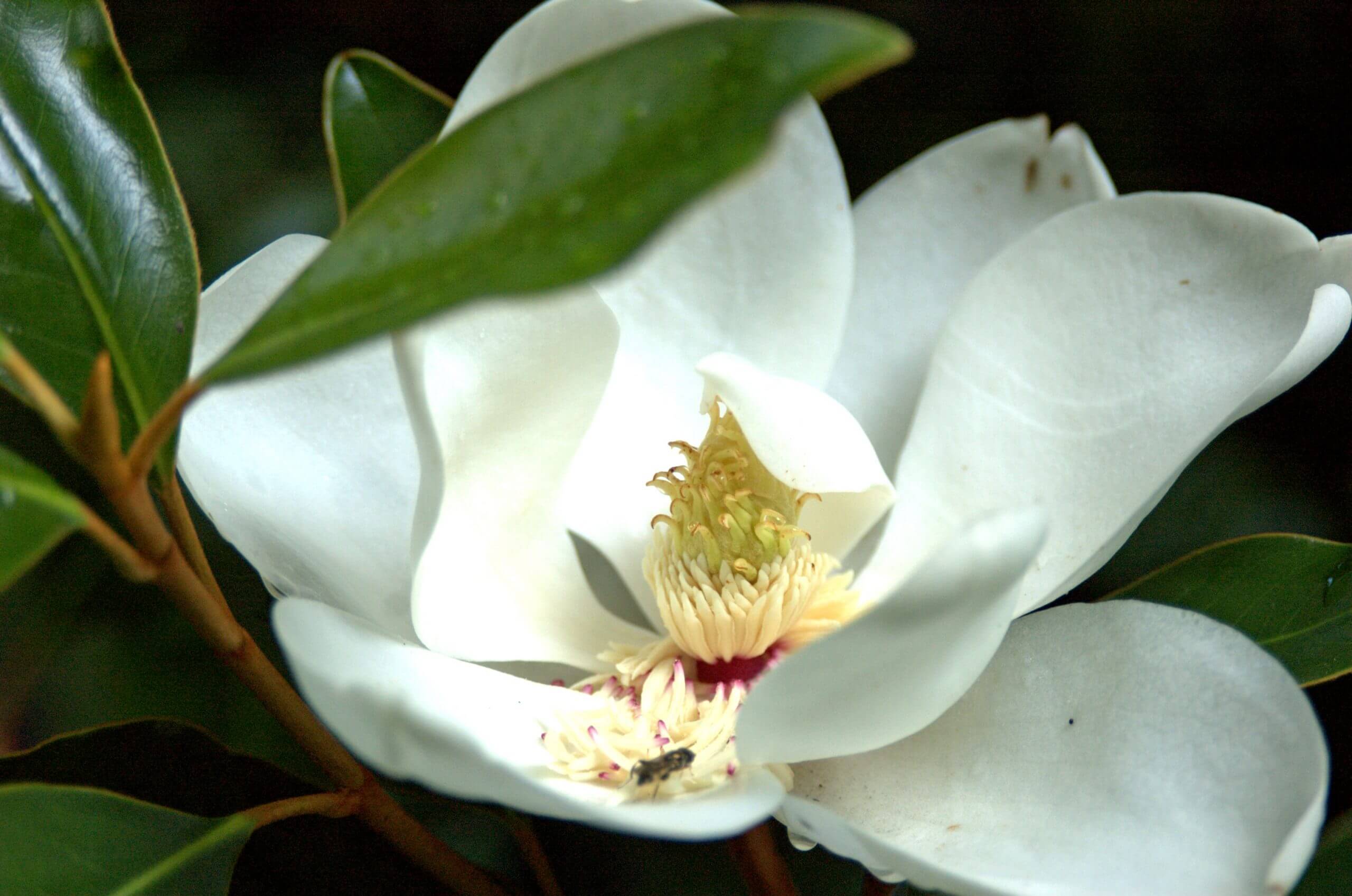
Is there a stronger magnet that draws one into a landscape than huge, super big flowers? I’m talking about blossoms the size of a small child’s head, a Sunday dinner plate, or a brass trumpet. Why would nature produce such enormous blooms when they rob energy from the plant? As pleasing as large flowers are to us, the plant’s primary purpose is to attract the right pollinator.

